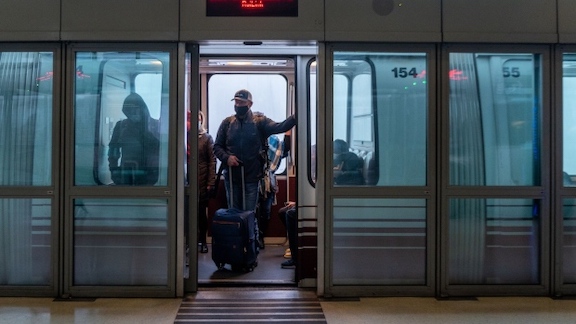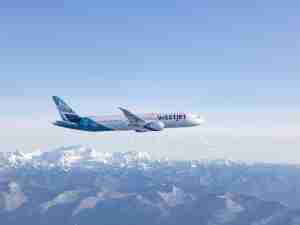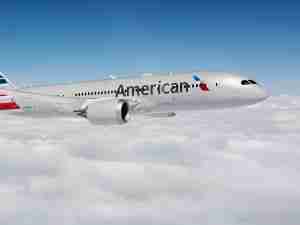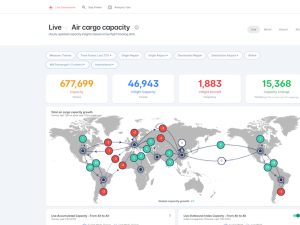Dilapidated walls, crowded gate areas, slow moving security lanes, dingy concourses, cramped hallways and terrible traffic getting in and out—not to mention rats crawling up chairs onto unsuspecting, sleeping passengers. It wasn’t long ago that the list of grisly complaints about New York City’s three airports went on and on. As recently as 2016, John F. Kennedy International Airport, Newark Liberty International Airport and LaGuardia Airport listed among the 10 worst airports in America, with LaGuardia taking the crown.
Fast-forward: LaGuardia’s new Terminal B and Newark’s new Terminal A stand as gleaming beacons of modern airport design and efficiency. Not only did each receive a maximum five-stars from aviation ratings firm Skytrax in March 2024—a designation based on a thorough audit of facilities and customer service—they were the only North American airports to appear on that coveted list.
Also in March, LaGuardia earned the 2023 title for “Best airport in North America” within its weight class (that is, airports serving 25 to 40 million passengers annually). That honor, part of the Airports Council International’s annual Airport Service Quality Awards, was based on passenger feedback collected in departure and arrival surveys.

“The recognition that both LaGuardia and Newark have received is simply astonishing,” says Rick Cotton, executive director of the Port Authority of New York and New Jersey. “No one could have predicted that situation.”
A full year after an $8 billion, six-year transformation overhauled LaGuardia’s drab spaces, people love flying through the very hub that President Joe Biden once described as “embarrassing” and “stupid” while tactlessly comparing it to a “third-world country.” The same is true of Newark, which in November 2022 wrapped a $2.7 billion, million-square-foot renovation of Terminal A that had broken ground in 2017.
For those who have traveled through these hubs in the past few months, it’s easy to see why. Claustrophobic and dingy arrival and departure halls have been replaced with larger versions lined with floor-to-ceiling windows for an airy feel. Where security lines once stretched past snaking corrals, there’s now two to three times as much space for passenger screenings. Check-in areas offer gleaming new kiosks and layouts that trend toward cushy instead of cattle class.
Sure, you may walk a bit longer to get through the new terminals at either airport—which are from 20% to 50% larger—but public art installations and upgraded restaurants and lounges make this feel less of a chore. Thoughtful amenities include children’s play areas, water and laser shows, and spacious bathrooms with tons of hands-free fixtures. Behind the scenes, new roadway networks have been expanded and taxiways restructured, streamlining flight operations.
“I can’t tell you how many people have said, ‘Would you believe it? I leave early to get to LaGuardia because I want to spend time in the airport,’” says Cotton.
Funding Next-Generation Airports
With approximately $10 billion spent so far, out of a $30 billion total investment, Cotton’s job is far from complete. Next up for an airport makeover is JFK, now undergoing $19 billion worth of construction to create two major terminals and expand existing ones, as well as upgrade roadways.
That 10-figure budget allocates $9.6 billion to a new Terminal 1—the largest of all the international terminals to be built in the region—plus $4.2 billion to build a new Terminal 6 (serving Lufthansa Group and JetBlue) and $1.5 billion to expand Delta Air Lines’ Terminal 4. All but $3.9 billion represents private investment; the rest comes from the Port Authority, a bistate agency that generates revenue from tolls, fees and rents it collects via facilities (not from income taxes).
Public-private funding partnerships have made the rebuilding of LaGuardia and JFK possible, Cotton explains, with the private partners contributing from 66% to 75% of the funding. Newark’s $2.7 billion Terminal A project was fully funded by the Port Authority.
Significantly, these public-private partnerships constitute 30-year commitments that include the obligation to renew and maintain the facilities, Cotton says, which should help keep the hubs from lapsing into dilapidation. There are also specifications for the airports to reduce greenhouse gas emissions and enhance sustainability.
The New Terminal 1 at JFK
Expected to open in June 2026 after a four-year makeover led by architecture firm Gensler, JFK’s New Terminal 1 (NTO) for international flights will fill 2.4 million square feet previously occupied by Terminals 1, 2 and 3. Seven partner airlines are currently expected to operate out of Terminal 1 when it opens, including Air France, KLM, Etihad and Korean Air. Jennifer Aument, NTO’s newly appointed chief executive officer, promises Terminal 1 will innovate on several fronts to help set a fresh global standard in customer service. “At the very earliest stages, every procurement we have, with every partner or service provider on the terminal, has our guest standards associated with it,” says Aument, speaking with Bloomberg during her first week on the job. Customer service expectations have been written into every employee’s contract, she adds, down to baggage handlers and janitors. (Her office declined to clarify those expectations, citing competitive reasons.)
On the design side, Gensler’s aviation lead Ty Osbaugh says the goal is to make life easier for passengers. To start with, the design will be compact, eschewing ultralong concourses. This is possible because the terminal will reduce distances by running roughly parallel to the runway, Osbaugh explains—compared to, say, Delta’s Terminal 4, whose geometry and the angled nature of the runway require lengthier walks. Arriving passengers will walk into an immigration hall with tall ceilings and windows, in lieu of a dull basement—and views of departing crowds below. Officers will be armed with the latest screening technology in order to process passengers faster.
Travelers with disabilities will be better served, thanks to new rules from the Port Authority. “This is the first terminal I’ve been involved in that actually plans for passengers with a disability from the outset,” says Osbaugh, including systems for curbside wheelchair assistance and dedicated lounges staffed by concierges for travelers with special needs.
The baggage claim area, never one to win fawning reviews, will be reimagined, too. The new Terminal 1’s 32-foot ceilings will give it the air of an arrival hall, with such lively design features as a New York taxi cab propped above the conveyor belts.
Improved Airport Access
The traffic and congestion associated with getting to these airports will remain a challenge, though the Port Authority is spending $1.24 billion to streamline the roads leading to JFK. It’s also building a new ground transportation center and creating additional parking, both due in 2027.
Building an Air Train to LaGuardia proved prohibitively costly, so New Yorkers will have to settle for new shuttle buses linking to the N and W lines at the Astoria-Ditmars Boulevard subway station; design and engineering will take an estimated four to five years, says Port Authority. Cotton says he’s committed to replacing the current Air Train to Newark, a project in early procurement stages.
At JFK, the recent expansion of Long Island Rail Road service to Grand Central Station and Penn Station has made it easier for travelers to access the Air Train’s Jamaica Station.
“We’re very much aware that travelers want better ground access to the airports,” says Cotton. “We are addressing that step by step.”










